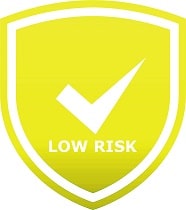Is Maternal Brucellosis Safe in Breastfeeding
Question
I am a breastfeeding mother and i want to know if it is safe to use Maternal Brucellosis? Is Maternal Brucellosis safe for nursing mother and child? Does Maternal Brucellosis extracts into breast milk? Does Maternal Brucellosis has any long term or short term side effects on infants? Can Maternal Brucellosis influence milk supply or can Maternal Brucellosis decrease milk supply in lactating mothers?
Maternal Brucellosis lactation summary

- DrLact safety Score for Maternal Brucellosis is 3 out of 8 which is considered Low Risk as per our analyses.
- A safety Score of 3 indicates that usage of Maternal Brucellosis may cause some minor side effects in breastfed baby.
- Our study of different scientific research indicates that Maternal Brucellosis may cause moderate to no side effects in lactating mother.
- Most of scientific studies and research papers declaring usage of Maternal Brucellosis low risk in breastfeeding are based on normal dosage and may not hold true for higher dosage.
- While using Maternal Brucellosis We suggest monitoring child for possible reactions. It is also important to understand that side effects vary largely based on age of breastfed child and time of medication in addition to dosage.
- Score calculated using the DrLact safety Version 1.2 model, this score ranges from 0 to 8 and measures overall safety of drug in lactation. Scores are primarily calculated using publicly available case studies, research papers, other scientific journals and publically available data.
Answer by Dr. Ru: About Maternal Brucellosis usage in lactation
Infection caused by several species of Brucella (B. melitensis, B. abortus and B. suis, rarely B. canis) by consumption of fresh milk products from infected animals or close contact to them. Apart from the transplacental and perinatal transmission, inter-human transmission is extremely rare (Nemenqani 2009). There are very few publications on transmission through breast milk being not able several of them to state it categorically since they could not exclude a transplacental transmission or from other sources of infection (supplementation to infants with non-human fresh milk is frequent in endemic areas (al- Nahedh 1994), failure to have a positive culture for Brucella in the breastmilk (Lubani 1988, al-Eissa 1990, Varon 1990, Barroso 1998, Palanduz 2000, Palanduz 2005, Arroyo 2006, Ceylan 2012, Calik 2012). Others found that transmission was transplacental or at delivery (Lubani 1988, Aydın 2013, Ozturk 2015). Some others commented that the infant was weaned, but did not point out to whether the child was infected or not. (Nemenqani 2009, Ozturk 2015). The only one reported case of Brucella infection of a 11-mo-old infant, Brucella melitensis was isolated from a breastmilk culture (Tikare 2008).Also, in rare cases of breast abscess due to Brucella infection, breastmilk cultures were positive for Brucella melitensis; two mothers breastfed their infants, but the author failed to mention the clinical condition or evolution of infants (Nemenqani 2009). Any way, the fact is that the incubation period lasts from 3 to 4 weeks (range 1 week to several months) and then until the first symptoms appear that again is followed by a time period to get a diagnosis which is often delayed, it is probably worthless withdrawing breastfeeding. Hence, it seems operationally more effective the initiation of treatment to the mother, test the infection status of the infant, follow him up and treat the child if indicated (al-Eissa 1990). Treatment of Brucellosis, which can include Doxycycline, TMP-SMX, Rifampicin, Streptomycin and Gentamicin, is compatible with breastfeeding (See specific info on these antimicrobials).
Alternate Drugs for Disease, Disorder & other Mother´s Conditions.
Maternal Anemia(Safe)
Maternal Rheumatoid Arthritis(Low Risk)
Cancer(Unsafe)
Maternal Candidiasis(Low Risk)
Anthrax(Safe)
Maternal Cardiopathy(Low Risk)
Maternal Cold(Safe)
Cesarean Section(Safe)
Maternal Cytomegalovirus(Safe)
Chlamydia(Safe)
Maternal Depression(Low Risk)
Maternal Diabetes Mellitus(Low Risk)
Drug Addction(Dangerous)
Pregnancy(Safe)
Maternal Epilepsy(Low Risk)
Maternal Multiple Sclerosis(Low Risk)
Maternal Phenylketonuria(Safe)
In Vitro Fertilization(Low Risk)
Maternal Cystic Fybrosis(Low Risk)
West Nile Fever (WNF)(Low Risk)
Maternal Galactosemia(Safe)
Maternal Acute Gastroenteritis(Low Risk)
Giardia Lamblia(Safe)
Maternal Gonorrhea(Low Risk)
Maternal Herpes Simplex(Unsafe)
Maternal Hyperprolactinemia(Low Risk)
Maternal Hyperthyroidism(Low Risk)
Maternal Hypothyroidism(Safe)
inflammatory bowel disease (maternal)(Low Risk)
Maternal Surgery Intervention(Low Risk)
Maternal Leprosy(Low Risk)
Maternal Lyme Disease(Safe)
Augmentation Mammoplasty(Low Risk)
Breast Reduction Mammoplasty(Low Risk)
Maternal Mastitis(Safe)
Ménière(Low Risk)
Menses(Safe)
Migraine(Safe)
Maternal Myopia(Safe)
Maternal Otosclerosis(Safe)
Maternal Psychotic Disorder(Dangerous)
Maternal Rabies Infection(Low Risk)
Maternal Rubella(Safe)
Maternal Measles(Low Risk)
Vaginal Dryness(Safe)
Maternal Aids(Unsafe)
Maternal Syphilis(Low Risk)
Botulinum Toxin(Low Risk)
Maternal Toxoplasmosis(Safe)
Maternal Transplant(Unsafe)
Maternal Trichomoniasis(Safe)
Maternal Tuberculosis(Low Risk)
Maternal Varicella(Low Risk)
Maternal T-Cell Leukemia/Lymphoma 1(Dangerous)
Maternal Htlv-Ii Infection(Dangerous)
Narcolepsy(Low Risk)
Acne(Safe)
Hepatitis E(Low Risk)
Zika Virus Infection(Safe)
